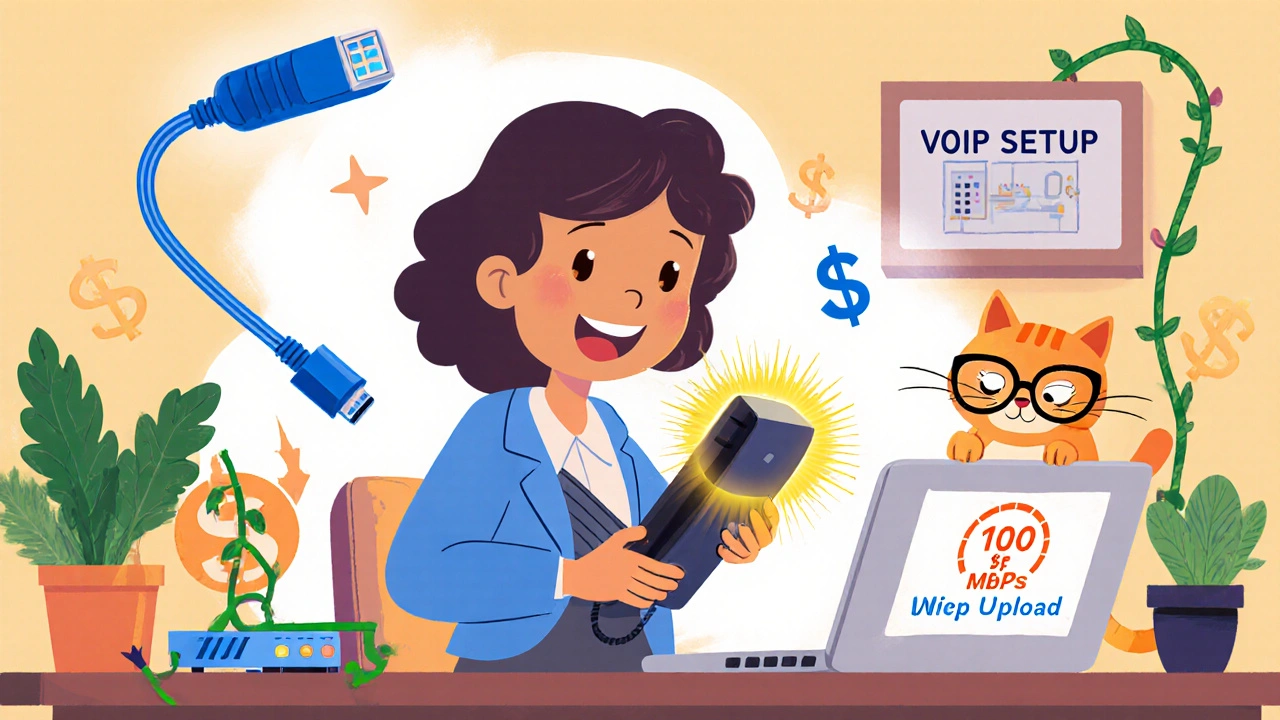VoIP Initial Investment: What It Really Costs to Switch to Internet Calling
When you think about switching to VoIP initial investment, the upfront costs of moving your phone system from traditional lines to internet-based calling. Also known as VoIP setup cost, it’s not just about buying new phones—it’s about understanding what you’re really paying for before you flip the switch. Many assume VoIP is cheap because it cuts monthly bills, but the first few months can feel expensive if you don’t plan right. You might need new phones, better internet, network upgrades, or even training. Skip this step, and you’ll end up with dropped calls, confused staff, and surprise fees.
One big piece of the VoIP hardware cost, the price of physical devices like SIP phones, gateways, or headsets needed to connect to your internet network. Also known as VoIP equipment cost, it varies wildly depending on whether you buy new, refurbished, or lease. A single high-end desk phone can cost $200, but a certified refurbished one runs under $80 with nearly the same lifespan. And if you’re using softphones on laptops or phones? That’s zero hardware cost—just software. Then there’s your network. If your internet is slow or shared with heavy users, you’ll need to upgrade your router or set up a Voice VLAN, a separate network channel that prioritizes voice traffic to prevent choppy calls. Also known as VoIP network segmentation, it’s not always required, but it’s a game-changer for businesses with 10+ users. Most small teams can get by on a $100 router with QoS settings. Larger offices might need a $500 business-grade switch. And don’t forget hidden stuff like cabling—CAT6 is enough for most, no need to overspend on CAT7 unless you’re in a factory with heavy interference.
Providers also charge setup fees, number porting costs, or monthly per-user fees that add up. Some companies bundle everything into one price, others nickel-and-dime you for features like voicemail-to-email or call recording. The key is to compare total first-year cost, not just the monthly rate. Businesses that track this properly often see their VoIP ROI, the return on investment from switching from landlines to VoIP, measured in savings and productivity gains. Also known as VoIP cost reduction, it’s what makes the upfront spending worth it. hit positive territory within 6 to 12 months. One client cut $12,000 off their annual phone bill just by switching providers and reusing old headsets. Another saved $3,000 by leasing instead of buying phones. You don’t need to spend big to win.
What you’ll find below are real, no-fluff breakdowns of what others actually paid—and what they saved. From refurbished gear that works just as well as new, to how a $150 network tweak saved a team from constant call drops. You’ll see how small businesses avoided $5,000 in unnecessary hardware, how one startup used free softphones to launch with zero upfront cost, and why leasing phones makes more sense than buying for growing teams. No theory. No sales pitches. Just what works.
